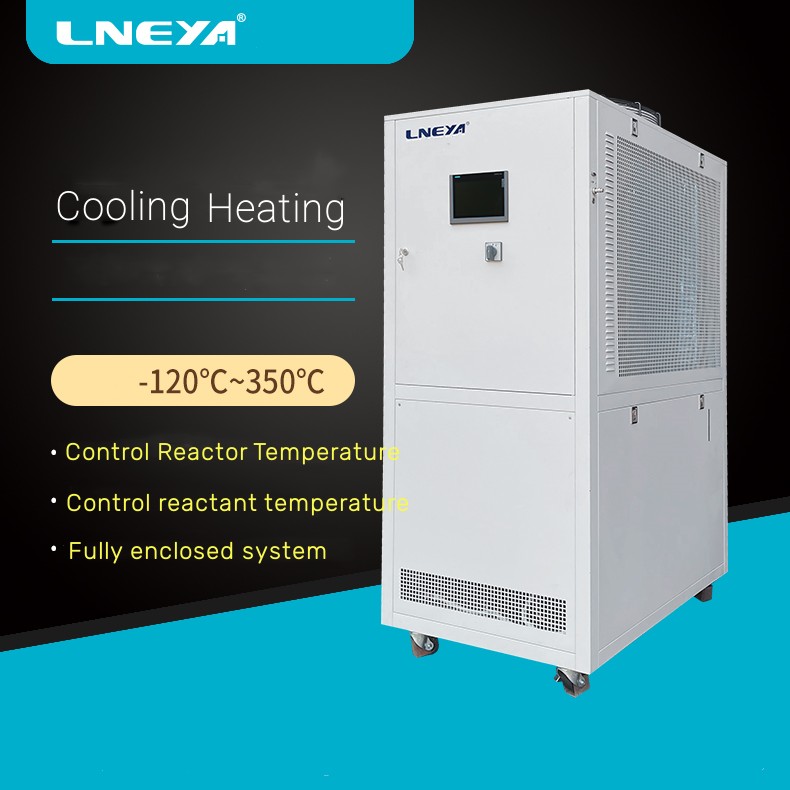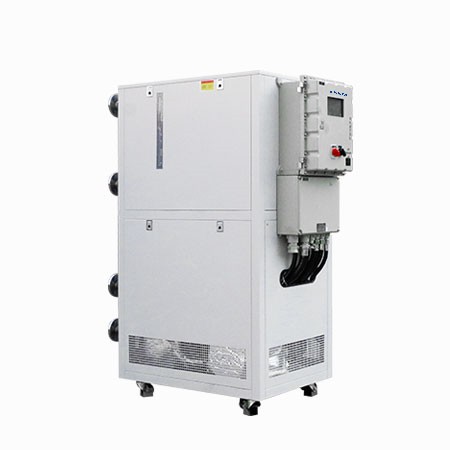Can a chiller provide both cooling and heating?
If your process requires both cooling and heating, a chiller that can only cool is obviously not up to the task. Buying a separate heater won’t avoid the hassle of switching devices. You may wonder if one device can perform both functions. This is why the refrigeratore riscaldatore combinato was born.
What is a chiller heater combo? What is the difference between it and a chiller? Is it worth buying? This article will answer your questions.
What is a chiller heater combo?
The chiller heater combo is an industrial temperature control device that has both cooling and heating functions. It can increase and decrease the temperature in the same system and is suitable for processes that require precise temperature control over a wide temperature range. It combines a cooling system and a heating system. The two work together and are controlled by a central controller.
Its cooling system is consistent with the single-function chiller, which is a compressor refrigeration cycle system. The function of the heating system is to quickly heat the circulating medium. Common heating methods include electric heating and thermal oil heating. Electric heating is often used in systems with water, glycol, or thermal oil. It uses heating rods or tubes to directly warm the fluid.

The heating power is usually precisely controlled by a solid-state relay (SSR) or a PID control module. Real-time temperature control can be achieved with a temperature sensor. Thermal oil heating is used in high-temperature scenarios or systems with thermal inertia requirements. The thermal oil flows in a closed loop and is heated by the heater and then transferred to the target device. This heating method has good temperature uniformity and is not prone to local overheating. It is suitable for applications with temperatures of 200°C or even higher.
The control core of the chiller heater unit is usually composed of PLC, PID, and human-machine interface (HMI), with real-time monitoring by PT100. Users simply set the target temperature on the touch screen, and the system will automatically determine and call the heating or cooling unit.
When the system detects that the temperature is lower than the set value, heating is automatically enabled, and when the temperature is higher than the set value, cooling is started, and the output temperature is always kept within the set temperature range. This automatic balancing logic can improve the intelligence level of the equipment and reduce the errors caused by manual operation.
The difference between a chiller heater combo and a chiller
The biggest difference between a chiller heater combo and a chiller is that the former can heat and cool, while the latter can only cool. This functional difference brings about a difference in performance.
Intervallo di temperatura del chiller
The chiller is a device that focuses on cooling. Its temperature control range usually drops from room temperature to low temperature, such as -10℃, -40℃, and high-performance products can reach -150℃. Within the temperature range, the chiller controls the evaporation of the refrigerant by adjusting the operation of the compressor, the opening of the expansion valve, and the system flow, thereby achieving temperature regulation.
The chiller can only reduce the temperature to the target value or maintain it in a low temperature zone, and cannot actively heat it. When the temperature needs to be raised above room temperature or to a high temperature zone, it must rely on the heating system. This is sufficient for applications that require heat dissipation of equipment and cooling of processes.
The combo adds a heating function on this basis. It can achieve a wide temperature range temperature control from high temperature heating to low temperature cooling by coordinating refrigeration and heating modules. Its operating temperature can range from below -80℃ to above +200℃. This function is particularly important for users who need to perform thermal cycle tests, temperature change experiments, or thermal shock tests.
Precisione del controllo della temperatura
The chiller can only cool down. When the temperature is close to the set value, it can only rely on the natural decay of the compressor cooling or the heat release of the load itself to adjust the temperature. Since it cannot actively increase the temperature, there will be a temperature control dead zone when approaching the target temperature, especially under low heat load. If the load heat changes frequently, the chiller temperature control is prone to lag, causing overshoot or temperature fluctuations.
The chiller heater combo can usually achieve higher precision temperature control. It can achieve two-way temperature regulation by quickly switching between cooling and heating to avoid lag in heating or cooling.
Velocità di risposta
The chiller responds quickly to cooling, but if it needs to heat up, it relies on an external heat source or waits for natural temperature recovery. The chiller heater combo has a built-in active temperature control system, which can quickly switch between cooling and heating modes without manual intervention.
Costo
Compared with the chiller, the chiller heater combo has a more complex structure. It adds a heating module, more temperature control components, more complex control logic, and higher-specification pumps and heat exchange components.
Moreover, it is often a customized product. The chiller supplier will help you determine the temperature range, refrigerant type, and add other functions according to your application requirements. The cost of design, testing, and manufacturing is higher than that of standard equipment. However, in the long run, the slightly higher cost can be exchanged for a more accurate, fast, and convenient temperature control experience.
Manutenzione
The chiller system structure is relatively simple, and maintenance is mainly focused on checking the refrigerant level, cleaning the condenser, and replacing the filter. Most projects can be maintained by yourself under the manufacturer’s instructions.
The structure of the integrated cold and hot machine is more complex, which means higher maintenance frequency, more professional troubleshooting, and higher maintenance costs. However, some products have built-in self-diagnosis programs to simplify some maintenance work. Most chiller heater combo manufacturers (LNEYA) provide remote technical support and regular maintenance services.
Do you need a chiller heater combo?
When you are hesitating whether to buy a chiller heater combo, you can ask yourself some questions to help you determine your needs. Does your process require two stages of heating and cooling? Do you want to use one device to complete the entire process? Does your process require temperature control accuracy? Does your project need to be carried out for a long time? Does your budget allow it? If your answer is yes, then investing in a chiller heater unit is worth it.
You can trust the LNEYA chiller heater combo
LNEYA has over 15 years of experience in temperature control.Our products serve industries such as battery testing, wafer production, chemical processes, and material R&D. LNEYA chiller heater combos support fast temperature ramping, precise control, and remote operation.They are ideal for thermal cycling, temperature swing, and thermal shock applications.
If you need a dual-function solution, our experts are ready to discuss your application needs.
Raffreddatori correlati
CONTATTO
TEL:TELEMATICO
EMAIL: EMAIL: EMAIL: EMAIL: EMAIL: EMAIL: EMAIL
WeChat e WhatsApp:

Wechat QR

Hai una domanda o hai bisogno di un preventivo? Compila il modulo qui sotto e il nostro team ti risponderà entro 24 ore.
 Refrigeratori industriali LNEYA Produttore Fornitore
Refrigeratori industriali LNEYA Produttore Fornitore













